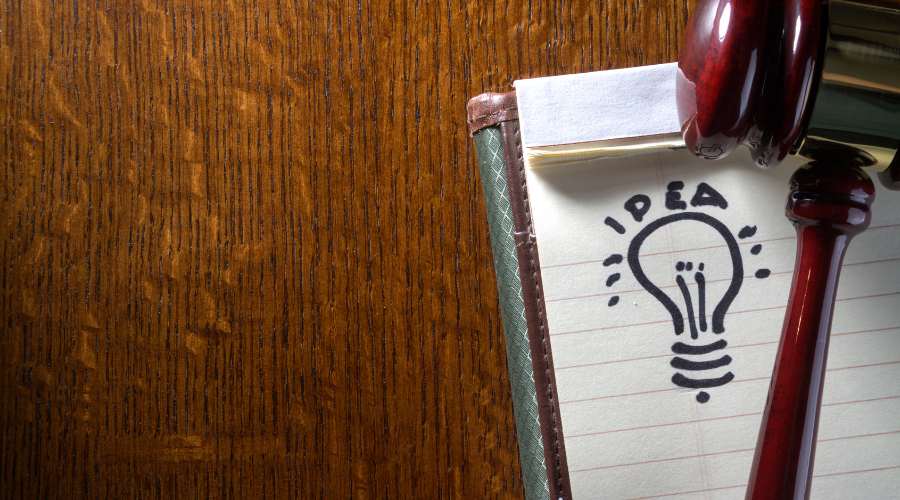Protecting your intellectual property is crucial for the success and growth of your business.
One of the most effective ways to safeguard your business idea is by obtaining a patent.
A patent grants you the exclusive rights to make, use, or sell your invention for a limited time.
In the United States, there are three types of patents: utility patents, design patents, and plant patents.
This blog post will provide you with a comprehensive guide on how to patent your business idea, including determining patentability, preparing and filing your patent application, and maintaining your patent.
Determining if Your Idea is Patentable
Before you embark on the patent application process, it’s essential to determine whether your idea meets the necessary criteria for patentability.
The United States Patent and Trademark Office (USPTO) requires that your invention must be novel, non-obvious, and useful.
Criteria for Patentability
- Novelty: Your idea must be new and not previously known or used by others. It should not have been described in a published document or publicly disclosed before the date of your patent application.
- Non-obviousness: Your invention must exhibit a significant and inventive step beyond what is already known in the field. It should not be obvious to a person skilled in the relevant field.
- Utility: Your invention must have a practical use or provide a tangible benefit. In other words, it must solve a problem or improve upon existing technology.
Conducting a Patent Search
Before you proceed with your patent application, it is highly recommended that you conduct a thorough patent search.
This search helps ensure that your invention is indeed novel and non-obvious, as well as preventing infringement on existing patents.
Importance of a Thorough Search: A comprehensive patent search can save you time, effort, and resources by identifying potential conflicts or issues with your invention early in the process.
Resources for Patent Search
- a. United States Patent and Trademark Office (USPTO) database: The USPTO maintains a publicly accessible database of issued patents and published patent applications. This is a great starting point for your patent search.
- b. Google Patents: Google Patents is a free search engine that allows you to search through patents and patent applications from around the world.
- c. Other Patent Databases: There are numerous other patent databases, both free and paid, that you can use to expand your search, such as WIPO’s PATENTSCOPE, eSpacenet, and Derwent World Patents Index.
Tips for Conducting an Effective Patent Search: To conduct an effective patent search, use a combination of keywords, classifications, and citation analysis.
Be prepared to invest time and effort in your search, as it can be a complex and iterative process.
Preparing Your Patent Application
Once you have determined that your idea is patentable, it’s time to prepare your patent application. There are two types of patent applications: provisional and non-provisional.
Types of Patent Applications
Provisional Patent Application
A provisional patent application is an optional step that allows you to establish an early filing date without having to submit a complete patent application.
It gives you 12 months to refine your invention, conduct market research, or secure funding before filing a non-provisional application.
Non-provisional Patent Application
A non-provisional patent application is a complete, formal patent application that initiates the examination process with the USPTO.
This application must include a detailed specification, claims, and drawings.
Components of a Patent Application
Specification: The specification is a written description of your invention, providing enough information for someone skilled in the relevant field to understand and replicate your invention. The specification consists of the following components:
- Title of the Invention: The title should be brief, descriptive, and accurately reflect the subject matter of your invention.
- Background: This section provides context for your invention by discussing the problems it addresses, the state of the art in the field, and any related prior art.
- Summary: A brief overview of your invention, highlighting its key features and advantages.
- Detailed Description: A comprehensive explanation of your invention, including its structure, function, and operation. This section should provide enough detail to enable someone skilled in the relevant field to recreate your invention.
- Abstract: A concise summary of your invention, typically no more than 150 words, which briefly describes the technical features and benefits of your invention.
Claims: The claims define the scope of your invention and the specific aspects of it that you seek to protect. Each claim should be clear, concise, and supported by the detailed description in the specification.
Drawings: If your invention can be visually represented, include drawings that clearly illustrate its features and components. The drawings should be labeled and referenced in the specification.
Tips for Preparing a Strong Patent Application
To increase the likelihood of your patent application being approved, ensure that your specification is detailed and well-organized, your claims are clear and specific, and your drawings are accurate and informative.
Hiring a Patent Attorney or Agent
While it’s possible to file a patent application on your own, hiring a patent attorney or agent can significantly improve your chances of success.
- The Role of a Patent Attorney or Agent: Patent attorneys and agents are professionals who specialize in preparing and filing patent applications. They can help you draft your specification, claims, and drawings, as well as navigate the complex legal and procedural requirements of the USPTO.
- How to Find a Reputable Patent Attorney or Agent: To find a reputable patent attorney or agent, ask for recommendations from your professional network, search online directories, or consult your local bar association. Be sure to interview potential candidates and evaluate their experience, success rate, and communication skills.
- Pros and Cons of Hiring a Professional vs. DIY Patent Application: Hiring a professional can increase your chances of obtaining a patent, save you time, and help you avoid potential pitfalls. However, it can be expensive. Filing a patent application on your own can save you money but may be time-consuming and challenging, especially for those without legal or technical expertise.
Filing Your Patent Application
Filing Fees
Patent application filing fees vary depending on the type of application, the size of the applicant (small, micro, or large entity), and the number of claims. Be prepared to pay additional fees for the examination, search, and issuance of your patent.
How to File a Patent Application with the USPTO
- Electronic Filing System (EFS-Web): The USPTO’s EFS-Web allows you to submit your patent application online. This is the preferred method of filing, as it is faster and more efficient than filing by mail or fax.
- Filing by Mail or Fax: If you prefer, you can submit your patent application by mail or fax. Be sure to follow the USPTO’s guidelines for paper submissions, including using the correct forms and paying the appropriate fees.
Timeframe for the Patent Application Process
The patent application process can take anywhere from one to several years, depending on the complexity of your invention and the workload of the USPTO.
Be prepared to be patient and respond promptly to any USPTO communications.
Responding to US PTO Communications
During the examination process, the USPTO may issue Office Actions, which are official communications that request additional information, raise objections, or require you to address certain issues.
It’s crucial to respond to these Office Actions in a timely and thorough manner, as failure to do so can result in the abandonment of your patent application.
Maintaining Your Patent
Once your patent has been granted, it’s essential to maintain and enforce your rights to protect your intellectual property.
- Patent Issuance and Maintenance Fees: Upon the issuance of your patent, you will need to pay an issuance fee. Additionally, to maintain your patent, you must pay maintenance fees at specific intervals (3.5, 7.5, and 11.5 years after grant) to keep your patent in force.
- Enforcing Your Patent Rights: As a patent holder, you are responsible for monitoring potential infringement and taking legal action if necessary. This may involve sending cease and desist letters, negotiating licensing agreements, or pursuing litigation.
- Licensing and Commercializing Your Patent: To maximize the value of your patent, consider licensing your technology to other companies or collaborating with partners to develop and market your invention.
Conclusion
Successfully patenting your business idea is a significant accomplishment that can provide you with valuable intellectual property protection and help you stand out in a competitive marketplace.








